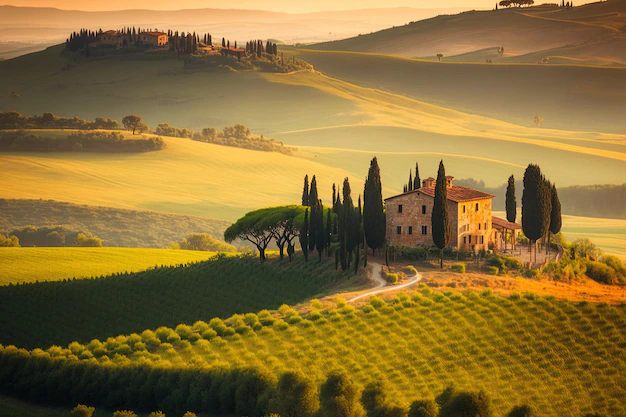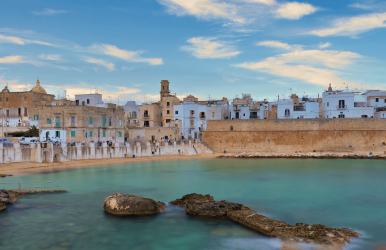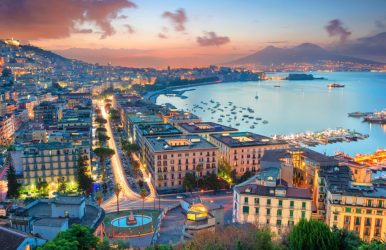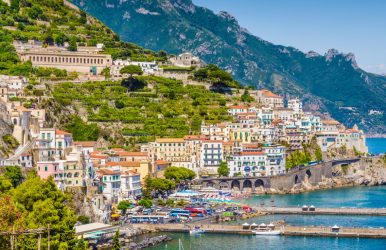Monopoli, Italy: How Is It Offering The Ultimate Santorini Feel With A Quieter Ambiance?
BY Sibashree Jun 23, 2025
Italy, like many other European countries, is fighting overtourism with increased taxes, visa rejections, and squirt guns. While Rome, Florence, and Venice continue to battle with this problem, off-beat locations such as Monopoli, Italy, can be a boost to Italian tourism, which contributed a whopping €223.1 billion to the economy of the country. Furthermore, thanks to the latest online buzz, Monopoli, Italy, or the #HEARTHOFPUGLIA, is now emerging as the “New Santorini.” With a much calmer vibe, of course! Also, along the Adriatic City, this Southern Italian city is a wonderful blend of natural beauty, culture, and history. In addition, this quaint borough of fishermen boasts noble palaces that will take you back to the 18th century. Moreover, it offers the ultimate Italian experience with relaxation. So, are you ready for a trip to this beautiful coastal town? This Tour and Travel Guide has everything you need to know. Where Is Monopoli, Italy? Monopoli is in the Bari Province of the Puglia region in Italy. Also, it is on the Adriatic Sea, and it has the most beautiful coastal landscape with a pleasant Mediterranean climate. Furthermore, Monopoli is well connected to all the nearby cities through boats, trains, buses, and cars. Also, you can use Monopoli as the base for exploring nearby attractions such as Ostuni, Alberobello, and Matera. What Is The Best Time To Visit Monopoli, Italy? May, June, and September are the best months for a visit to Monopoli, Italy. These months bless you with pleasant weather conditions. Also, these months are ideal for bypassing the extreme crowd in July and August, which are the peak months. So, do you want to know about the weather conditions of Monopoli in detail? Have a look at the table below. Months Highest Temperature Lowest Temperature January 13 6 February 14 7 March 16 8 April 20 10 May 25 13 June 31 19 July 34 20 August 33 20 September 28 16 October 23 14 November 18 10 December 15 7 How Did Monopoli, Italy, Get Its Name? A Glimpse Of The History Monopoli’s Greek connection is not limited to being dubbed as the new Santorini. It has got its name from Monos Polos, which in Greek meant a single harbor. Further, inhabited for thousands of years now, Monopoli, Italy, has a history dating back to the Roman and Greek periods. Also, it always has been strategically important as a port town since antiquity. However, the Romans called this town “Apulia,” and it grew as a critical trading post thanks to its closeness to the Mediterranean Sea. Also, being a port city and a part of Southern Italy, Monopoli had an encounter with various cultures, such as: Byzantines Normans Spanish So, each civilization left a deep mark on the city and contributed to developing its cultural and architectural richness. Even in the Middle Ages, especially, Monopoli, Italy, was a part of the Kingdom of Sicily. Also, many noble families used to govern the town, and they built many places, churches, and buildings. Again, the remnants of these architectural marvels are one of the best things to see in Monopoli, Italy. Moreover, as you take a walk along the narrow cobbled street of the Old Town of Monopoli, the ancient stone buildings stand as a telltale of the town’s past. Exploring the history of the town brings us to the best things to explore in Monopoli, Italy. Let’s take you on a tour of the Old Town and beaches. Also, it’s a delight to share the vibrant gastronomic and cultural scene of the town with you. Monopoli, Italy: Why We Love It And How It Has Become The New Santorini The beautiful beaches and the unique charm of the Old Town make the place exude the quintessential Santorini charm. 1. Take A Walk Around The Old Town: Time For Some Time Travel Beautiful squares! Ancient stone buildings! Charming and cobbled maze of alleys! These are the elements that make up the historical center of Monopoli, Italy. You must especially visit the "Centro Storico," or the Old Town, as it is one of the most well-preserved historic towns in Puglia. Also, as you take a walk through the alleys, you will meet many churches, fortifications, plazas, and other iconic landmarks of the city. Let’s discuss briefly about them! Cattedrale Di Santa Maria Della Madia (Cathedral Of Santa Maria Della Madia) Do you want to know about the most beautiful Romanesque architecture of Monopoli? You must visit Cattedrale di Santa Maria della Madia (Cathedral of Santa Maria della Madia). This 12th-century church is an enviable hub of religious art collection and artwork of the local artists. Furthermore, the elegant interior of the church complements the grand facade, and the frescos and altars will win over you. Castello Carlo V: A Spanish Defense Against Invaders Castello Carlo V dates back to the 16th-century. This fortress defended the city and its people from the invaders and pirates. Further, this Spanish fortress houses a museum that shows you the rich military history of the town. Also, the monumental towers and big walls of the fort show why it was strategically important during the Renaissance. Chiesa Di San Salvatore: A Modest Yet Beautiful Church Chiesa Di San Salvatore, a small church in the Monopoli Old Town, goes back to the 15th century. Further, the Old Town has many such beautiful churches that add to the historical significance and charm of Monopoli. 2. Beaches And Natural Beauty: Making Monopoli The Ultimate Coastal Gateaway In Italy Soft sandy shores along the Adriatic Coast and turquoise water make Monopoli the ideal beach destination in Italy. Furthermore, the beaches here are ideal for sunbathing, swimming, or indulging in the serenity of the surroundings. Have a look at the table below to learn about the best beaches here. Best Beaches In Monopoli Why We Love Them Lido Santo Stefano A fusion of private and public beach areas Beach bars and restaurants Cala Porta Vecchia Close to the Town Center Crystal clear waters Surrounded by dramatic cliffs Crystal clear water The ideal condition for swimming Spiaggia di Cala Paradiso A hidden gem Peaceful ambiance Natural beauty of the Adriatic Coast Moreover, the Monopoli coastline has many natural caves which you can explore by boat. For example, The Grotte di Monopoli is a series of cliff caves. These caves are ideal for knowing about the local geological history. 3. Take A Taste of Puglia At Monopoli, Italy If you want to taste the quintessential taste of the Puglia region, you have to be in Monopoli. Traditional dishes of the Puglia region are full of flavors, and also they are made with local and fresh ingredients. Furthermore, you will see the abundant use of seafood, freshly baked bread, tomatoes, and olive oil. Do you love seafood? You have to be in Monopoli, Italy, to try shellfish and fresh fish. Also, don’t forget to try frittura di pesce, a friend’s seafood platter here with squid, anchovies, and shrimp. The light batter and the zing of the lemon do the magic here. Another signature element in the local dishes here is a variety of olive oils. You will find the use of the finest extra virgin olive oils and even fresh olives from the famous farms of Puglia. Are you a wine connoisseur? You will love Negroamaro and Primitivo, two famous red wine varieties in Monopoli, Italy. 4. Soak In The Cultural Vibe Of Monopoli: Cultural Tourism In Monopoli You were wrong if you thought that Monopoli is just about seafood and beaches. This beach town houses various festivals throughout the year, and the Feast of Santa Maria della Madia is probably the most popular among them. This festival in December celebrates the patron saint of the town, and is celebrated with great pomp with processions, grand fireworks, and mass. Furthermore, Monopoli has many open-air theaters and plazas where various performances and concerts are held during the summer season. So, enjoy food, history, beach, and culture at Monopoli, Italy. However, do you want to explore more of Monopoli? Then, visit the Byzantine churches and structures in the Old Town and plan a trip to the countryside. Furthermore, the Monopoli countryside has Trullis or stone made cylindrical houses with a conical roof. Moreover, the rural community in the countryside is very lively, making your time in the coastal town unforgettable.













